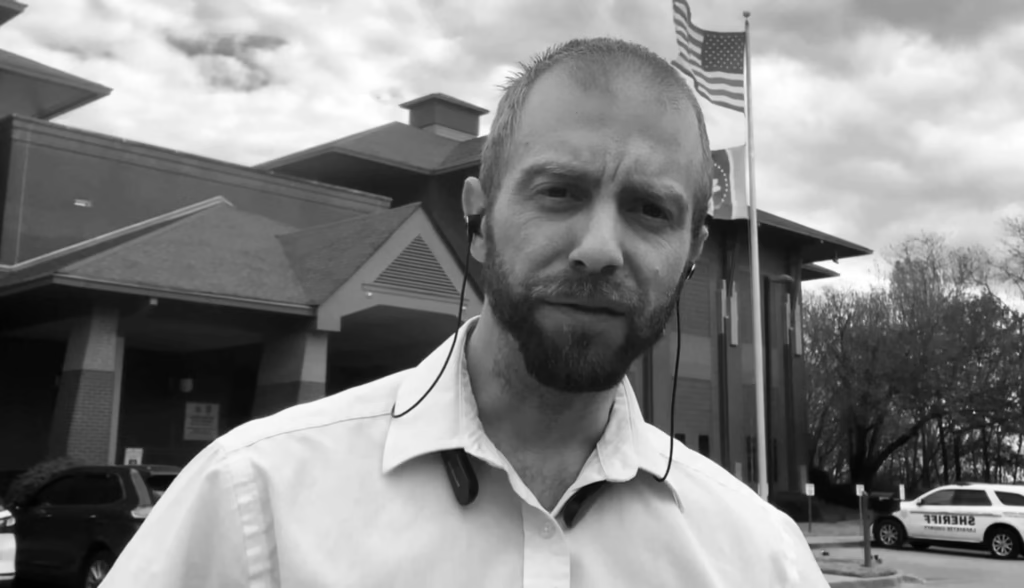In a shocking display of government overreach, independent journalist Matthew Reardon faces criminal charges for exercising his constitutional rights outside the John M. Shaw Federal Courthouse in Lafayette, Louisiana. As the founder of We the People News, I’ve been following this case closely, as it represents a direct assault on press freedom and the right to petition the government for redress of grievances.
Court documents reveal a disturbing pattern of surveillance targeting Reardon after he discovered through a Freedom of Information Act request that U.S. Marshals had placed a BOLO (“Be On the Lookout”) alert on him simply for engaging in protected journalistic activities. Rather than addressing this concerning violation of press freedoms, federal authorities doubled down by arresting Reardon when he peacefully protested this surveillance on August 25, 2025.
The Government’s Surveillance Campaign
Peaceful Protest Met With Excessive Force
The facts are clear: Reardon was conducting a constitutionally protected protest on the courthouse steps, a traditional public forum where First Amendment activities have historically received the highest level of protection. His protest signs criticized what he perceived as unlawful targeting of his journalism through the BOLO alert.
When Marshal Hayden Newsom invited Reardon inside the courthouse only to immediately threaten him with arrest for recording, Reardon peacefully exited the building. Despite complying with all directives and maintaining a peaceful demeanor throughout the encounter, Reardon was ultimately arrested when Marshal Newsom forcibly seized his camera equipment.
Constitutional Rights Trampled
Reardon’s defense team has filed a powerful motion to dismiss, citing binding Supreme Court precedent that clearly protects political protest in traditional public forums. The motion references Edwards v. South Carolina (1963), where the Supreme Court protected protesters who engaged in “boisterous, loud, and flamboyant conduct” while expressing political grievances.
The defense motion also cites United States v. Hylton, where the Fifth Circuit affirmed that criminal sanctions cannot be imposed for the “legitimate and protected exercise of the right to petition for the redress of grievances.”
Government’s Weak Response
The government’s opposition filing reveals the weakness of their case. They attempt to redefine courthouse steps—long recognized as traditional public forums—as “nonpublic forums” to justify their censorship. This directly contradicts Supreme Court precedent in United States v. Grace (1983), which established that “the public sidewalks forming the perimeter of the Supreme Court grounds… are public forums and should be treated as such for First Amendment purposes.”
Even more troubling, the government admits they cannot address Reardon’s as-applied constitutional challenge before trial, essentially acknowledging they need to put him through the ordeal of criminal proceedings before addressing the fundamental constitutional issues at stake.
Three Protected Activities Criminalized
The government’s prosecution targets three forms of constitutionally protected expression:
- Political Speech: Reardon’s protest signs and spoken commentary criticizing government surveillance fall within “the very center of the constitutionally protected area of free expression” according to Supreme Court precedent.
- Press Activity: As an investigative journalist documenting events for his 3,000-subscriber YouTube channel, Reardon’s recording activities are protected under the First Amendment’s press clause.
- Petition for Redress: Reardon’s expression of grievances against government officials constitutes petitioning for redress, which the Supreme Court has called “among the most precious of the liberties safeguarded by the Bill of Rights.”
Content-Based Targeting
Perhaps most disturbing is the evidence of content-based discrimination. Reardon was targeted not because of any genuine disruption—the defense motion notes that “members of the public continued to enter and exit the courthouse during his protest without incident”—but because of the critical content of his message about federal law enforcement.
The government’s claim that Reardon obstructed an entrance falls apart when examining the facts: he placed his camera near a door that was permanently locked to public access, meaning there was no “usual use” to obstruct. When asked to move the camera, Reardon immediately complied, demonstrating his respect for legitimate security concerns.
What’s At Stake
This case represents a dangerous precedent for independent journalists and citizens who dare to criticize government actions. If peaceful protest on courthouse steps—a location specifically recognized by the Supreme Court as a traditional public forum—can be criminalized, then the First Amendment protections we all rely on are in grave danger.
As this case proceeds, We the People News will continue to monitor developments and fight for the constitutional rights that protect all Americans’ ability to hold their government accountable.
Don Matthews is the founder of We the People News, an independent journalism platform dedicated to government accountability and constitutional rights.
Discover more from We The People News
Subscribe to get the latest posts sent to your email.

